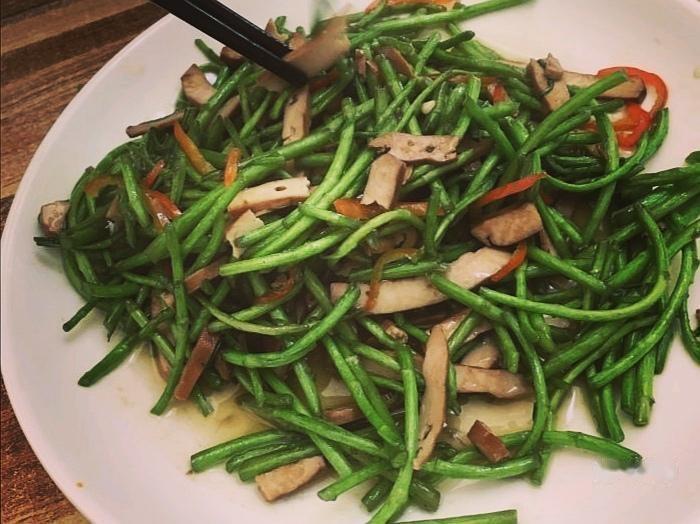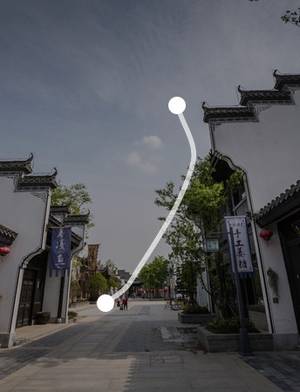Beautiful and picturesque Caishi Cliff, one of the Three Famous Cliff of the Yangtze River
1 cities |
11 attraction(s) |
total distance 19
km
 TIPS
TIPS
Day1
Day2
Day1: Ma'anshan
6 attraction(s) ·
16 km
1
Yushan Lake is located in the central area of Ma'anshan City, connected to the Yangtze River through Yushan River. It has a water area of 1087 mu and was developed into an urban park in 1959. Together with the nearby Jia Mountain and Yushan, it forms the characteristic landscape of Ma'anshan. The central area of Ma'anshan City is built around Yushan Lake, with four prosperous urban streets surrounding the lake. The camphor trees, ginkgo trees, plum blossoms, and bauhinia trees planted along the roads not only add beauty to Yushan Lake but also become the lungs of the entire city. Throughout the year, the camphor trees turn red with snow in autumn and winter, the plum blossoms bloom like golden carpets in early spring, the ginkgo leaves bring a joyful mood in summer, and the bauhinia trees provide shade under the scorching sun. In recent years, the development of the Nanhuhu and Beihuhu roadside parks has dredged and expanded the Yushan Lake water system, improving the city's anti-flooding capacity and adding a natural atmosphere to the urban environment, making it an excellent place for people to relax during holidays.
3
km
2
Liberation Road is the most popular food in the city. It is located next to Yushan Lake in Ma'anshan City, where you can enjoy the tranquil lake during the day and the beautiful sunset in the evening. A city, no matter how prosperous its economy is, if no one steps up to create a restaurant with connotation and pursuit, then the city will always have an empty heart. Such a restaurant has appeared on the beautiful Yushan Lake in Ma'anshan with this desire. The dishes here are exquisite and delicious. Recommended dishes: Hungarian beef soup, creamy bacon tuna, tiramisu.
5
km
3
Zhu Ran Chen Lieshiguan is the tomb of Zhu Ran, a great general of the Eastern Wu Kingdom in the Three Kingdoms period. It can be reached by taking the No. 10 bus from Ma'anshan Railway Station Square. The tomb was excavated in June 1984 and many precious cultural relics were unearthed, including lacquerware that filled a gap in the history of Three Kingdoms art. It is the largest and earliest tomb discovered in the Eastern Wu dynasty, and is considered one of the top ten archaeological discoveries in China in the 1980s.
6
km
4
Mount Jiuhua has charming scenery, with attractions such as Taibai Tower and Snail Tail. The mountain is covered with lush trees, and from Taibai Tower, you can see the surging Yangtze River. The dense foliage also provides a good habitat for wildlife, including rabbits, hedgehogs, cuckoos, and woodpeckers. They peacefully coexist with humans, forming another beautiful scene with their melodious and crisp bird songs.
3
km
5
The whole hotel has three floors with Hui-style architectural style and some unique decorations. The cuisine offered is traditional Hui dishes, with a strong flavor of stinky mandarin fish and a large portion of stir-fried eel. Local seasonal vegetable dish, water spinach, is tender and delicious. The service attitude is very good.
1
km
6
The hotel provides a buffet breakfast, with a wide variety and affordable prices. The restaurant has attentive service.
Day2: Ma'anshan
5 attraction(s) ·
4 km
1
Caishi Jie, also known as Niuzhu Jie, is located at the foot of Cuiluo Mountain, 5 kilometers southwest of Ma'anshan City. Caishi Jie is a steep cliff facing the river, with turbulent water and unique rock formations, boasting magnificent scenery. It is known as one of the "Three Jies of Yangtze River" along with Yueyang Chengling Jie and Nanjing Yanzi Jie. Caishi Jie has a distinct natural landscape and profound cultural connotation, and is hailed as the foremost among the three jies. It is also the final resting place of the famous Tang Dynasty poet Li Bai. Li Bai was deeply enamored of Caishi Jie and visited and composed many famous poems here, such as "Niuzhu Jie" and "Wangtianmen Mountain". He left behind the moving legend of "getting drunk and catching the moon, and riding a whale to ascend to the sky", and finally laid to rest in the nearby mountains. During the Tang Dynasty's Yuanhe period, Taibai Tower was built here. From the tower, one can enjoy a panoramic view of the thousand-mile landscape, earning it the nickname "the storehouse of wind, moon, river, and sky in a tower". For thousands of years, famous scholars and literati have come here to seek the remnants of poetry immortals or immerse themselves in profound historical sentiment, leaving behind a lasting legacy of literary grace and elegance.
2
km
2
Lin Sanzhi Art Museum is an exhibition hall of the works of Mr. Lin Sanzhi, a master of cursive script in China and a contemporary sage of cursive script. Mr. Lin Sanzhi, who was born in Wujiang Town, Hexian County, Anhui Province, had a lifelong passion for mountains and forests. In his early years, he benefited from the calligraphy and painting master Huang Binhong. Whenever he encountered beautiful scenery, he would climb up, recite poems, and sketch, creating more than 800 sketches and over 200 poems, with a particular expertise in calligraphy. He started creating cursive script at the age of sixty, achieving great success and gaining acclaim both domestically and internationally, earning him the title of a generation's master. Before his passing, Mr. Lin expressed his wish to be buried near Li Bai, saying "the time to return and be neighbors with Li Bai has come." Therefore, more than a century later, the city of Ma'anshan established an art museum for him inside Caishi Park, fulfilling his wish. The design of Lin Sanzhi Art Museum follows a garden style and covers an area of 3,800 square meters. In the lush courtyard, the main hall, the auxiliary hall, and the academic hall are three antique buildings with thatched roofs, pink walls, and red windows, arranged in a harmonious manner. The main hall is named "Cottage on the River" and houses over a hundred representative works from various periods of Mr. Lin's career, mostly exquisite cursive script pieces. The sketches and manuscripts of his landscape paintings and poems are preserved in the auxiliary hall. Worth mentioning is the presence of several prehistoric tree remains in the courtyard - petrified wood standing silently, enjoying the spring sunshine with azaleas and winter snow with bamboo. It is worth noting that in Mr. Lin's self-narration in his late years, he referred to himself as "San Mu" (Scattered Wood). However, even scattered wood can be immortal, allowing us a glimpse into the ingenuity of the designer of this art museum.
1
km
3
The taste of the dishes here is very suitable for the Jiangsu and Zhejiang style, and the Anguilla in the Yangtze River is especially delicious. The bamboo shoots are very tender. There are many choices of dishes, and the prices are affordable.
2
km





























